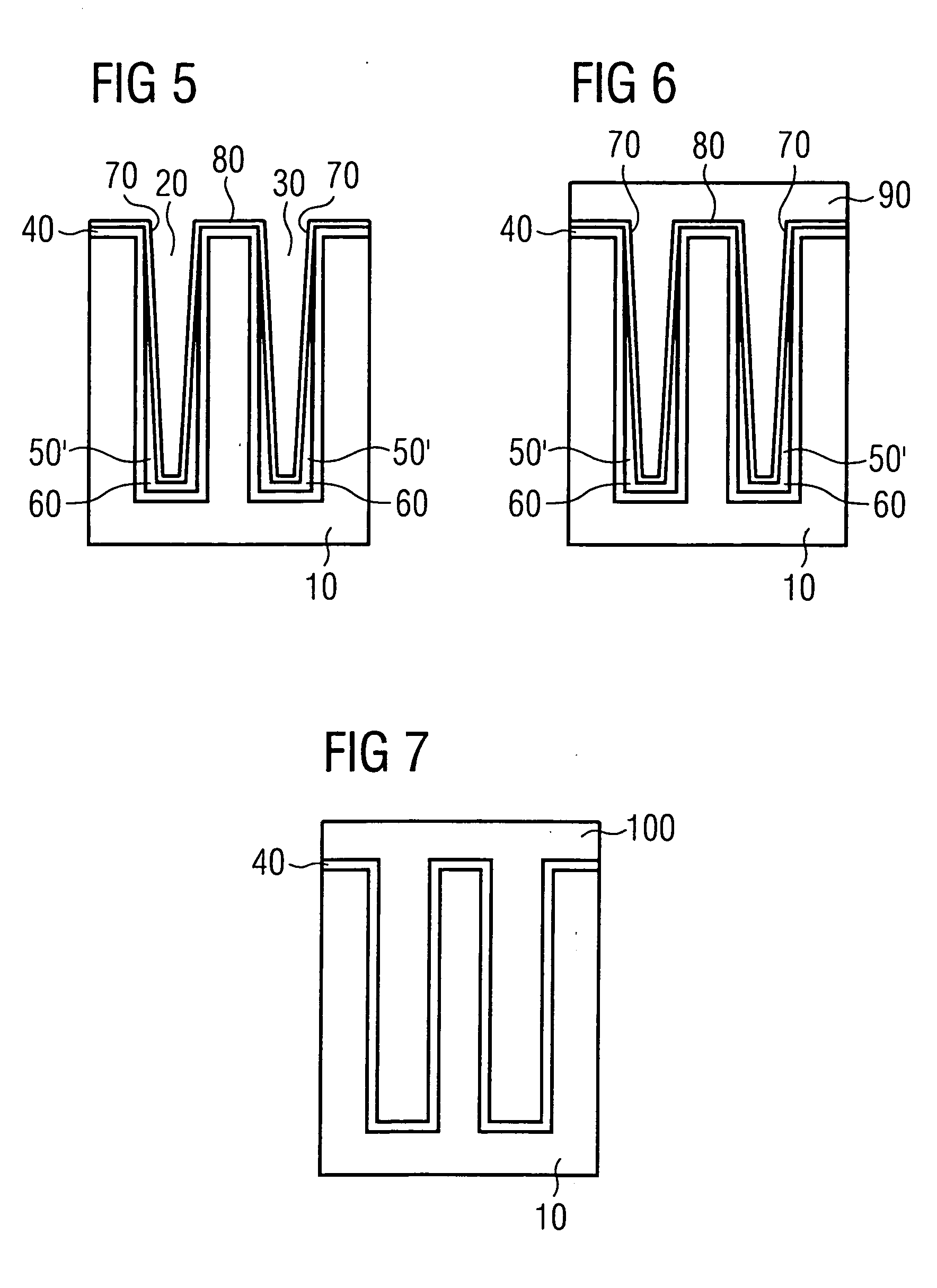Gap-filling for isolation
a technology of gap-filling and isolation, applied in the direction of basic electric elements, semiconductor/solid-state device manufacturing, electric devices, etc., can solve problems such as unwanted gaps, and achieve the effect of increasing the oxidation rate of the semiconductor layer
- Summary
- Abstract
- Description
- Claims
- Application Information
AI Technical Summary
Benefits of technology
Problems solved by technology
Method used
Image
Examples
Embodiment Construction
[0020] The making and using of the presently preferred embodiments are discussed in detail below. It should be appreciated, however, that the present invention provides many applicable inventive concepts that can be embodied in a wide variety of specific contexts. The specific embodiments discussed are merely illustrative of specific ways to make and use the invention, and do not limit the scope of the invention.
[0021]FIG. 1 shows a silicon substrate 10 having two trenches 20 and 30. The trenches are etched in a usual way, e.g., using an oxide or nitride hard mask. An SiN-liner (i.e., layer) 40 is deposited on the substrate 10 and on the trenches 20 and 30 (FIG. 2). The SiN-liner 40 protects the underlying silicon structure and makes sure that the silicon structure cannot be oxidized in further process steps.
[0022] On top of the SiN-liner 40, a conformal oxide liner 50, preferably a TEOS-based oxide liner, is deposited. The resulting structure is shown in FIG. 3. The process param...
PUM
 Login to View More
Login to View More Abstract
Description
Claims
Application Information
 Login to View More
Login to View More - R&D
- Intellectual Property
- Life Sciences
- Materials
- Tech Scout
- Unparalleled Data Quality
- Higher Quality Content
- 60% Fewer Hallucinations
Browse by: Latest US Patents, China's latest patents, Technical Efficacy Thesaurus, Application Domain, Technology Topic, Popular Technical Reports.
© 2025 PatSnap. All rights reserved.Legal|Privacy policy|Modern Slavery Act Transparency Statement|Sitemap|About US| Contact US: help@patsnap.com



